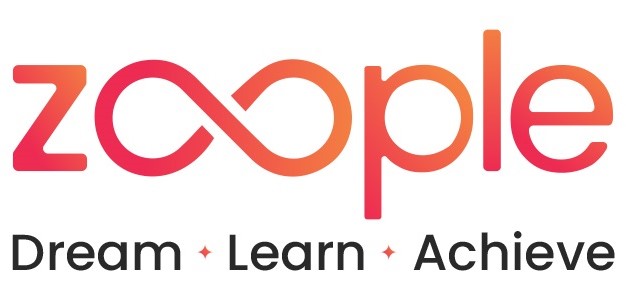How to Become a Full-Stack Developer: A Step-by-Step Guide
In our tech-focused world, being a full-stack developer is now one of the hottest skills around. A full-stack developer is a skilled expert who can work on both the front end and back end of web applications. If you aspire to become a full-stack developer, you’re in the right place. This detailed guide will lead you through the key steps necessary to establish a successful career in full-stack development.
What is full-stack development?
Full-stack development entails working across all layers of a web application. It includes:
- Front-End Development: Building the user interface and experience of a web application.
- Back-end Development: Creating and managing the server-side logic, databases, and application functionality.
- DevOps: Understanding how to deploy, integrate, and operate web applications.
Why Become a Full-Stack Developer?
- Versatility: You can manage both client-side and server-side jobs.
- Increased Employability: Companies value developers who can work on all parts of a project.
- Higher Salary Potential: Full-stack developers typically command greater wages due to their diversified skill sets.
- Career Flexibility: You can work in various domains and technologies.
- Problem Solving: You’ll be equipped to solve complex issues across different layers of an application.
How to Become a Full-Stack Developer?
- Understand the Basics of Web Development
- Learn Popular Front-End Frameworks and Libraries
- Master Back-End Development
- Get Comfortable with Version Control
- Explore DevOps Basics
- Build projects and gain experience
- Keep learning and stay updated
1. Understand the Basics of Web Development
Before entering full-stack programming, you should have a solid foundation in core web technologies.
Front-End Technologies:
- HTML: Learn the markup language and structure used to make web pages.
- CSS: Master styling and layout techniques to enhance the visual appearance of web pages.
- JavaScript: Understand the programming language used to add interactivity to online sites.
Back-End Technologies:
- Programming Languages: Learn server-side languages like Python, Ruby, PHP, Java, or JavaScript (Node.js).
- Databases: Learn about NoSQL (MongoDB) databases and SQL (MySQL, PostgreSQL).
- APIs: Understand how to create and consume APIs to enable communication between different parts of an application.
2. Learn Popular Front-End Frameworks and Libraries
Once you have a grasp of basic front-end technologies, enhance your skills with popular frameworks and libraries:
- React.js: A JavaScript library for building user interfaces.
- Angular: A framework for developing dynamic web applications.
- Vue.js: A progressive framework for creating user interfaces.
These tools will help you build more complex and efficient front-end applications.
3. Master Back-End Development
Deepen your understanding of server-side development by learning:
- Server-Side Languages: Choose a language such as Node.js (JavaScript), Python Django, or Ruby on Rails (Ruby).
- Frameworks: To speed development, use frameworks like Express.js (Node.js) or Flask (Python).
- Database Management: Learn how to interact with and manage databases, including writing queries and managing schemas.
4. Get Comfortable with Version Control
Version control systems play an essential role in overseeing modifications to code and facilitating collaboration among developers.
- Git: Learn about Git version control and GitHub or GitLab repository hosting.
Branching: Understand branching strategies and how to merge code changes effectively.



5. Explore DevOps Basics
Understanding DevOps practices will help you with deployment and continuous integration.
- Containerization: Learn how to use Docker to build, deploy, and operate programs in containers.
- CI/CD: Familiarize yourself with continuous integration and continuous deployment tools like Jenkins or GitHub Actions.
- Cloud Platforms: Get to know cloud services such as AWS, Azure, or Google Cloud for deploying applications.
6. Build projects and gain experience
Practical experience is essential for achieving proficiency in full-stack development.
- Personal Projects: Start by building small projects to apply what you’ve learned.
- Open Source Contributions: Engage in open-source initiatives to acquire hands-on experience and work alongside fellow developers.
- Internships and Freelancing: Seek internships or freelance opportunities to work on real-world projects and gain professional experience.
7. Keep learning and stay updated
Technology is constantly evolving, so staying up-to-date is essential:
- Follow Industry News: Keep up with the latest trends and advancements in full-stack development.
- Join Communities: Participate in forums, attend meetups, and join online communities to network and learn from others.
- Take Advanced Courses: Enroll in specialized courses to deepen your knowledge and skills in specific areas of full-stack development.
Conclusion
To wrap it up, diving into full stack development is an awesome adventure that gives you a well-rounded skill set, covering everything from front-end to back-end work. By mastering the essential technologies and embracing a continuous learning mindset, you position yourself as a versatile and valuable asset in the tech industry.
For those ready to take the next step in their tech career, Zoople Technologies offers a robust training program tailored to guide you through each phase of this exciting path. Our expert-led courses, hands-on projects, and real-world scenarios ensure you gain the practical experience and confidence needed to excel as a full-stack developer. Zoople Technologies is dedicated to your success and ready to help you every step of the way.
Begin your journey with us today and discover the complete potential of your career. Visit our website or contact us to learn more about our full-stack developer training programs. Your future as a tech leader begins here!



